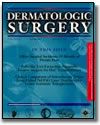Current Concepts of Fat Graft Survival

Dermatologic Surgery
2000 Abstract
0112-1159 Sommer
Sommer B, Sattler G.
Current concepts of fat graft survival: histology of aspirated adipose tissue
and review of the literature. Dermatol Surg. 2000 Dec;26(12):1159-66. PMID: 11134994
Rosenparkklinik Darmstadt, Cosmetic Dermatologic Surgery, Darmstadt, Germany.
BACKGROUND:
Controversy remains about the longevity of correction in autologous fat grafts and its relation to adipocyte survival. Reported long-term fat graft survival rates differ widely, depending on harvesting method, means of
reinjection, injection site, and evaluation methods.
OBJECTIVE:
To demonstrate histologic findings of aspirated adipose tissue and compare the findings to the reports in the literature.
METHODS:
Review of the literature and the histology of transplanted fat 7 years after subcutaneous implantation and trypan blue staining to determine the vitality of defrosted adipocytes.
RESULTS:
Fat cells survive aspiration with a suction machine or syringe equally well. Use of a liposuction cannula or 14-gauge needle gives comparable results. Local anesthesia or tumescent local anesthesia is recommended for the donor site, preferably with addition of epinephrine.
CONCLUSION:
Clinical longevity of correction after autologous fat transfer is determined by the degree of augmentation resulting from the amount of fibrosis induced and the number of viable fat cells. Survival of aspirated fat cell grafts depends mainly on the anatomic site, the mobility and vascularity of the recipient tissue, or underlying causes and diseases, and less on harvesting and reinjection methods.
Publication Types:
Review
Review, Tutorial
